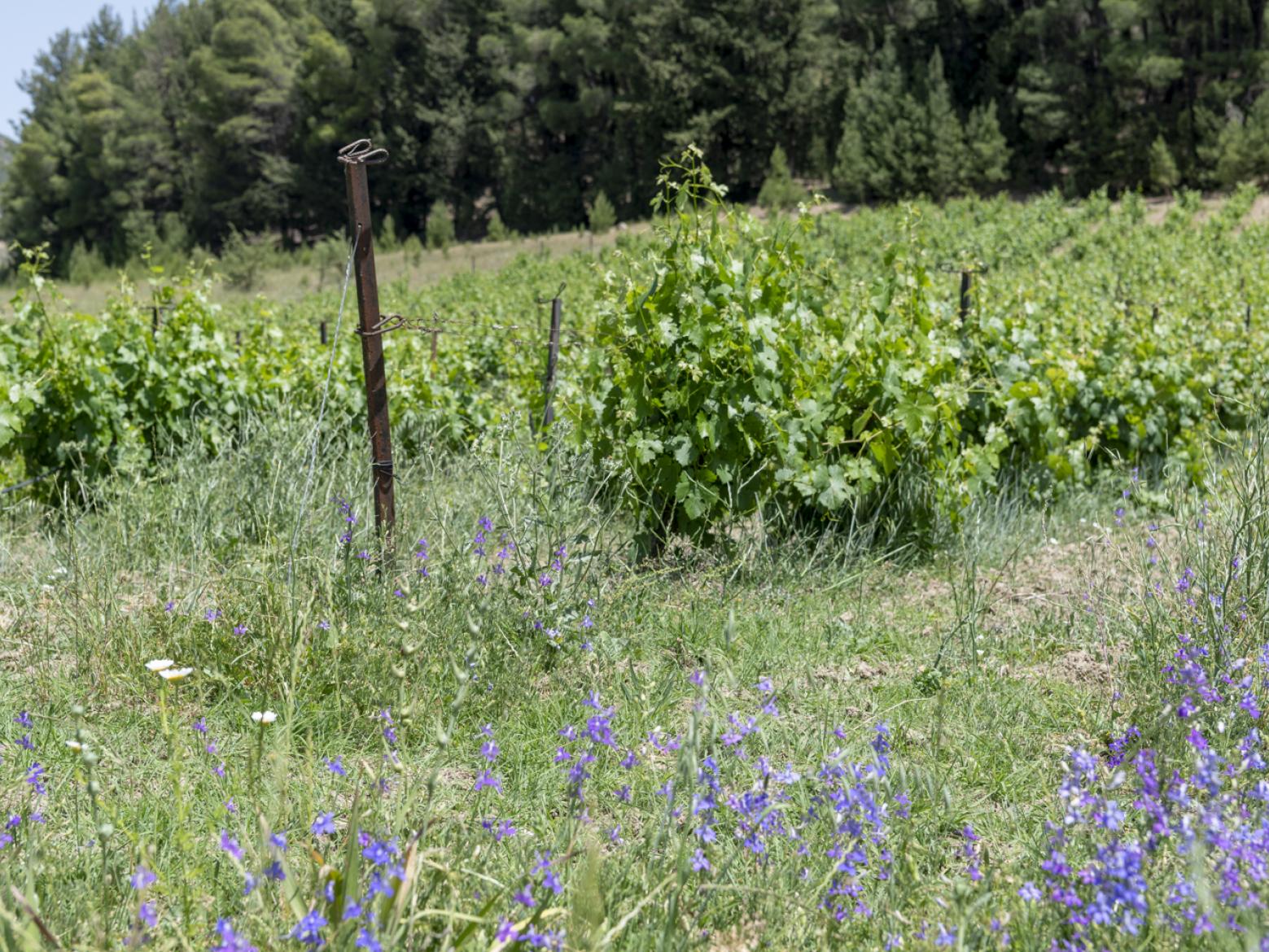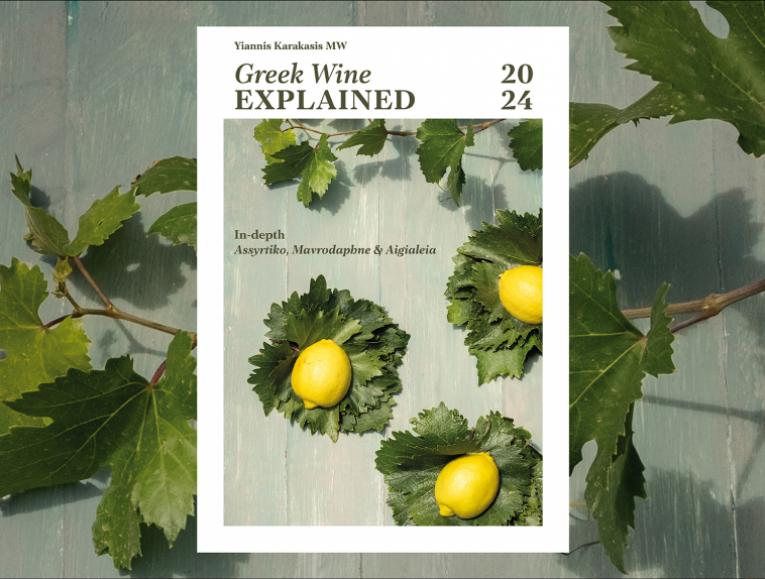Discovering Mantineia Part 2
By Olga Antoniadou
It seems that sometimes the cosmos is set on making things difficult. This second part on the Mantineia region has fermented for over a couple of months, and there always seemed to be a hitch. To read Olga's first part, read here.
Another three wineries with two wines tasted for each. This time I cover the wineries that have carved the history of Mantineia and contributed to the survival of the vineyards and growers of the region. In the order with which I spoke to the wineries.
Boutari Winery
Founded in 1927, it belonged to the Cambas family and was passed on to the Boutari family in 1991. I spoke to the oenologist, Alexandros Tzachristas. A man in his 40s who studied oenology in Athens, acquired a masters's and PhD, started working at Boutari under the supervision of Yiannis Vogiatzis and Roxanne Matsa, and later married a local lady and stayed on as the chief oenologist. The winery is situated in Milia of Mantineia; it farms about 70 ha, of which 30 ha are privately owned and produces about 860,000L of wine. The plateau is at 650-700 m, the soils vary from clay to sandy clay loam to gravelly, and the vineyards are on slopes. The climate is continental, with hot summers, a high diurnal range, and cold winters with an average rainfall of about 780 mm. The average temperature is rising due to climate change, and at times, there are intense local weather phenomena, including hailstorms.
“We must be alert to combat fungal diseases due to humidity. We are also one of the latest harvest regions,” says Tzachristas. The average age of the vines is 15 years, but they own about 6 ha, with old vines about 50 years of age. They dry farm and have used organic farming practices for almost 20 years but are now in the process of gaining certification. Some of the vines are cordon-pruned with trellising, but there are also a few goblets. “The variety is rather terpenic and has high phenolic potential; that is why we don’t want to cold soak for too long pre-fermentation”. Most of the wines are fermented with cultivated yeasts to ensure a steady fermentation, except for the labels Oropedio and Boutari Naturally (ambient yeast, low intervention wines). They currently make five labels which are 100% Moschofilero. Their most generic wine is Moschofilero Boutari, but they produce Faia Gi (Mavrofilero), Cuvée Spéciale (from the old vines), Oropedio and Boutari Naturally from single vineyards.
Boutari Moschofilero Cuvée Spéciale 2021
A wine I really liked. Aromas of apple, and pear, with a slightly more tropical note of melon together with the heady scents of rose petals and jasmine, combined with biscuits and a somewhat creamy texture from lees ageing. The concentrated ripe fruit flavour balances the acidity. A long finish that is more herbal (minty).
Faia Gi 2020
A single vineyard wine that shows aromas of citrus fruit, papaya juice, rose petals, beeswax, honey, smoky, herbal with a savoury finish. Very well crafted.
I met up with lovely Konstantina (Ntina) Spiropoulou amidst the school final exams and was taken by her modest, friendly, candid character. She, an agriculturalist, who spent years working in the olive oil department, found herself taking over the family winery and switching fields in 2020 after her brother Apostolos, also an agriculturalist with oenology at UC Davis, fell ill and was subsequently lost six months ago. She strongly advocates permaculture and biodiversity (trees, natural growth, lucerne) and supports innovation. This year she decided on precision viticulture, had a GPS/GIS system installed, and is having the entire vineyard mapped to best manage specific parts or rows. The winery dry farms organically, and almost everything is done manually. It is located very near the archaeological site, the owned vineyard area covers 55 ha, but they have another 6 ha contracted. Her grandfather planted the first vines in 1971 and was one of the first to grow on American rootstock and train on trellises. In 1987 her dentist father made their first wine, and the vineyard was replanted between 1990 and 2000. The soils are limestone, and apart from Moschofilero, they have also planted Agiorgitiko, Cabernet Sauvignon, Merlot, Chardonnay, Sauvignon Blanc and Gewurtztraminer. Frost risk is mitigated by pruning later and leaving more buds. In the winery, lower intervention methods are used. They make white and rosé Sparkling wine (Odi Panos) in the Charmat method. This year, they will release 400 bottles of Traditional method Sparkling wine and a rosé single vineyard Moschofilero (Limna: 3 months on the fine lees, some oak). Apart from their PDO Mantineia, they also make several wines blended with Moschofilero.
Spiropoulos Mantinia PDO 2021
Aromas of lemon, lime, bergamot, rose, yeast and biscuits, with a slightly minty herbal note, fantastic acidity and a lemony aftertaste. This wine cries for food.
Limna Vineyard Rosé Moschofilero 2021
A fascinating wine with aromas of lemon, sweet oranges, cherries, strawberry, roses, peonies, white pepper, yeasty, smoky, and creamy with a lovely citrusy, savoury aftertaste.
This was the second time I happened to interview Aris Tselepos, although for a different reason. A good-looking, laid back, polite young man who studied Chemical Engineering at the Greek Polytechnic School and then went on to study viticulture and oenology at UC Davis. He partook in two harvests in Napa Valley and one in Cloudy Bay, New Zealand, before returning home to help in the winery. The vineyard began to be planted in 1989 near the village of Rizes by his father, Yiannis. Upon his return from his studies in Bordeaux, the latter went to Mantineia to work as a consulting oenologist, fell in love with Amalia, and decided to settle in the area. The first label was made in 1991. The winery was completed in 1994; this was the first year the wine was produced on-site. They own 60 ha of undivided land and farm an extra 12 ha contracted. The vines are at altitudes between 730-800 m on slopes, which causes some problems with soil erosion, and, more recently, due to climate change, very local hailstorms. In 2016 all of the Merlot and Gewurtztraminer harvests were destroyed. The vines are planted on various soils, from clay loam to limestone with stones to schistous. Most of the vines are replacement cane pruned with VSP trellising, except for experimental planting of the local Koliniatiko, which is in goblets. Apart from Moschofilero (60-70% of plantings), they grow Merlot, Gewurtztraminer, Chardonnay and Cabernet Sauvignon. They are currently in the transitional phase of becoming certified organic. The winery uses temperature-controlled stainless steel tanks, cement eggs, oak barrels and amphorae. Their annual production is about 400,000 bottles. They make several labels, but I will focus only on the Moschofilero labels. Traditional Method Sparkling Amalia (1yr in bottle) and Amalia Vintage (2yrs in bottle), and I am told that they filed a request for sparkling wines to be included in Mantineia PDO, Gris de Nuits (rosé), Blanc de Gris (3-4 mths on the fine lees) and will be releasing 2,000-3,000 bottles of a low intervention wine made in amphora.
Amalia Vintage 2018
A fantastic traditional method of sparkling wine which shows complexity from the citrus fruit, apple, pear, and orange blossom aromas combined with aromas of brioche and yeast, balanced by the high acidity with a long, savoury, bitter lemon aftertaste. So fresh!
Blanc de Gris 2021
A heady wine with aromas of roses, jasmine, lemon, lime, citrus fruit, strawberry sherbet, biscuits, creamy, and a more herbal minty, off-dry aftertaste.





